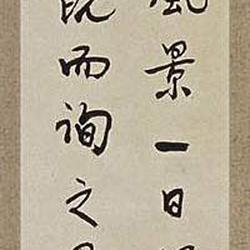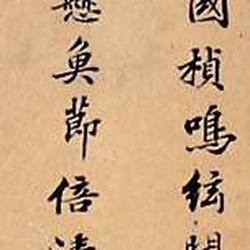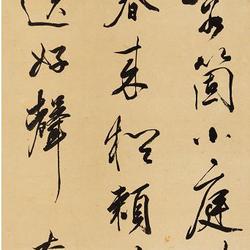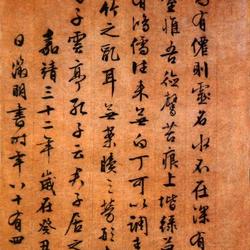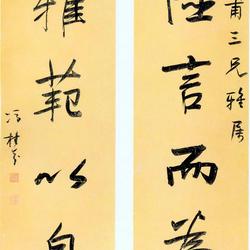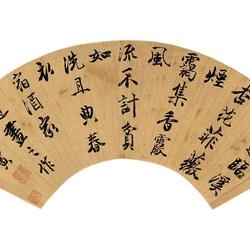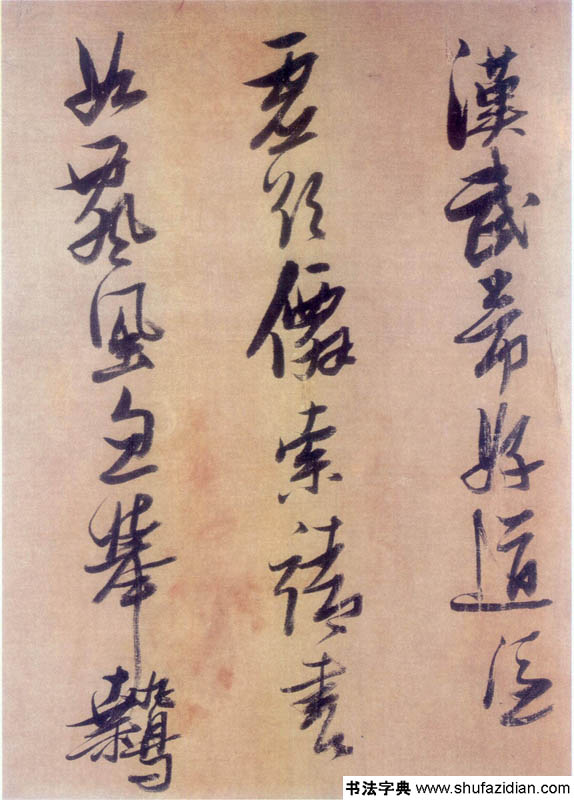
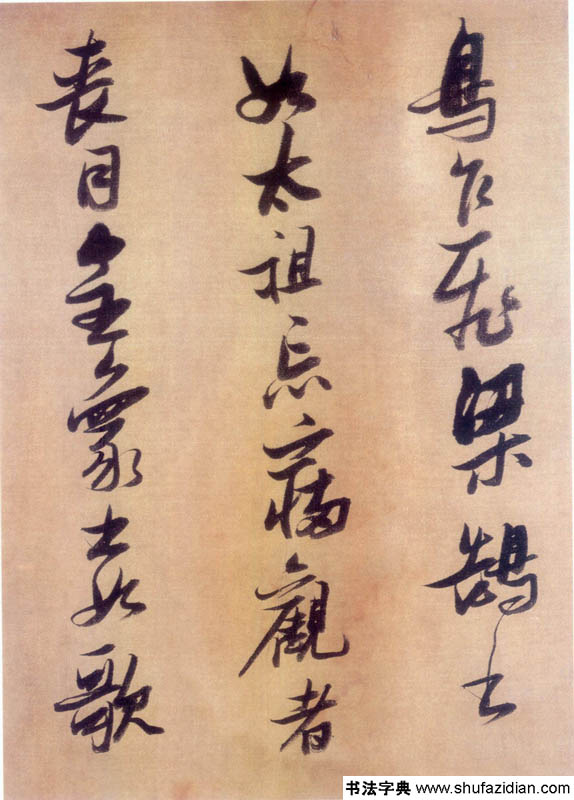
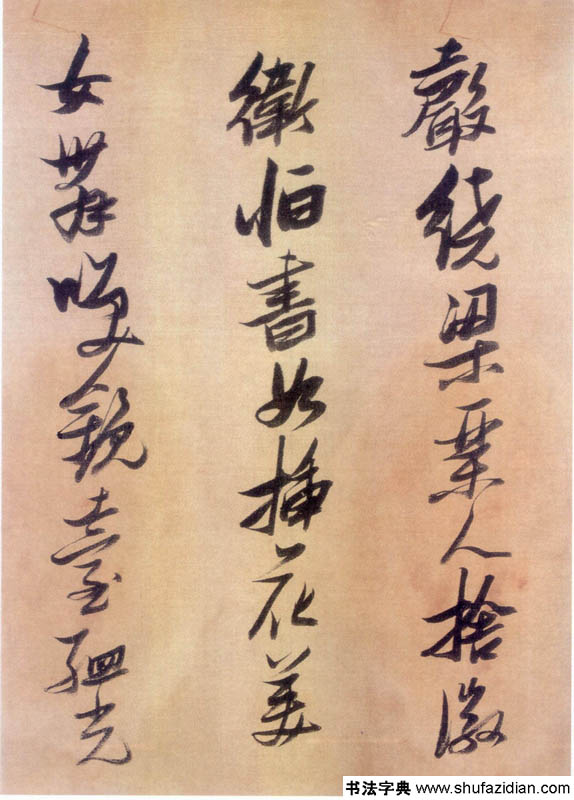
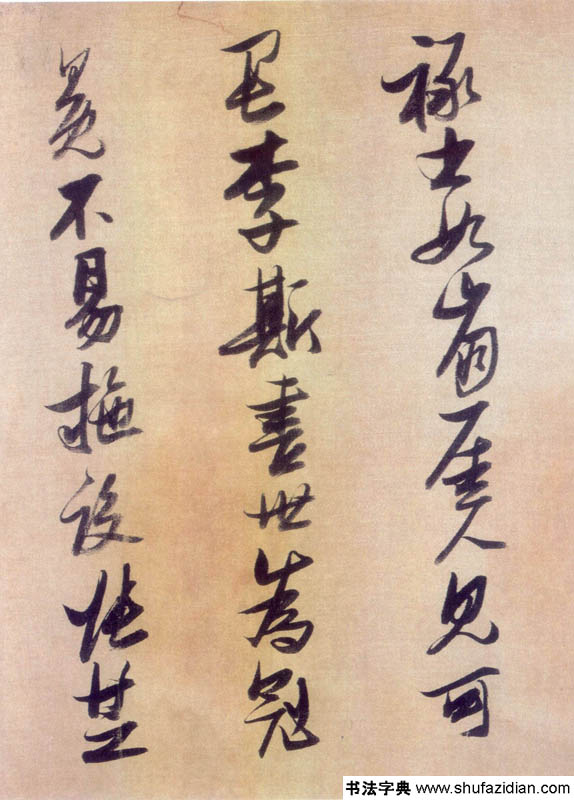
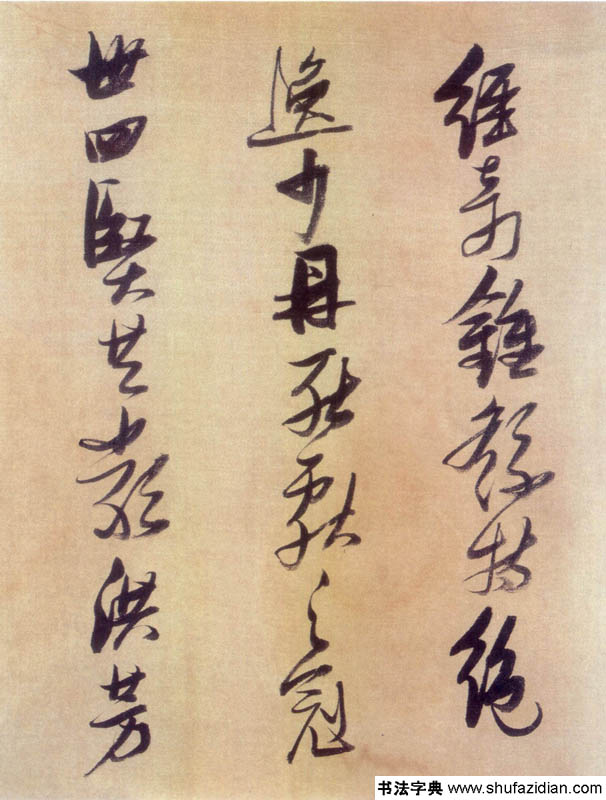
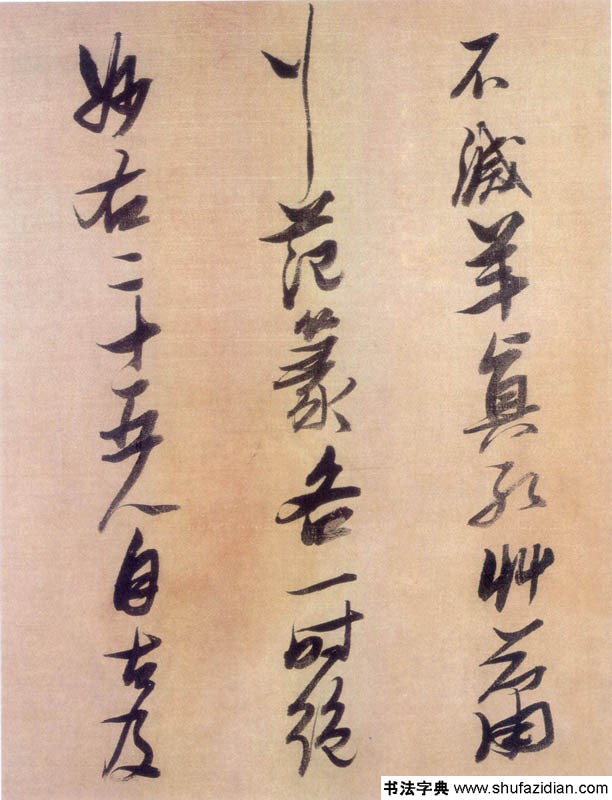
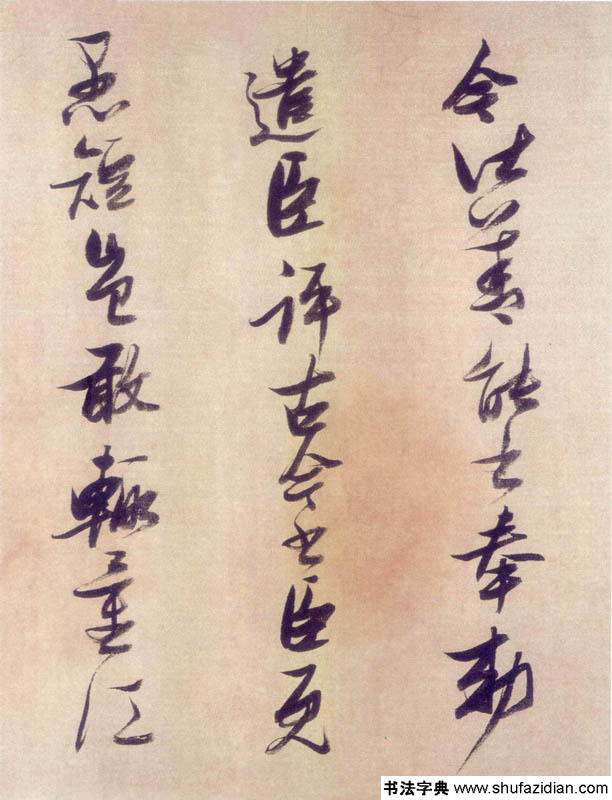
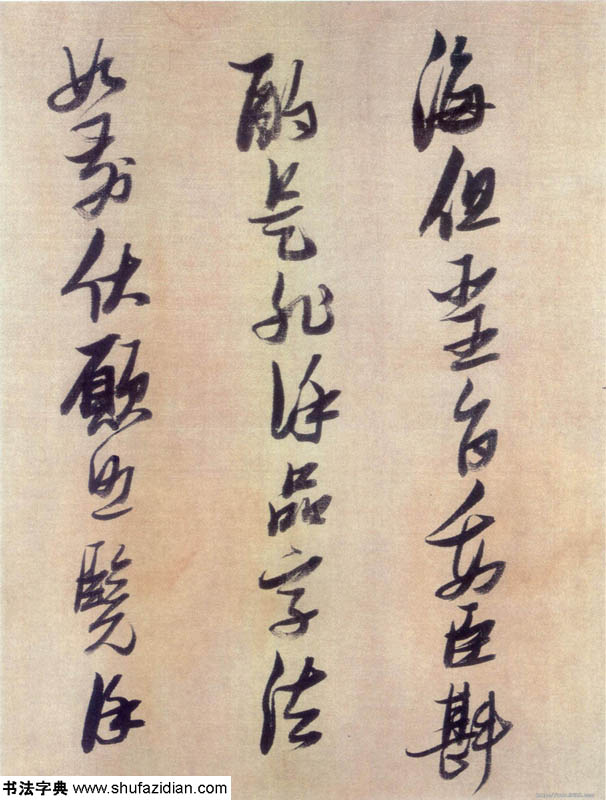
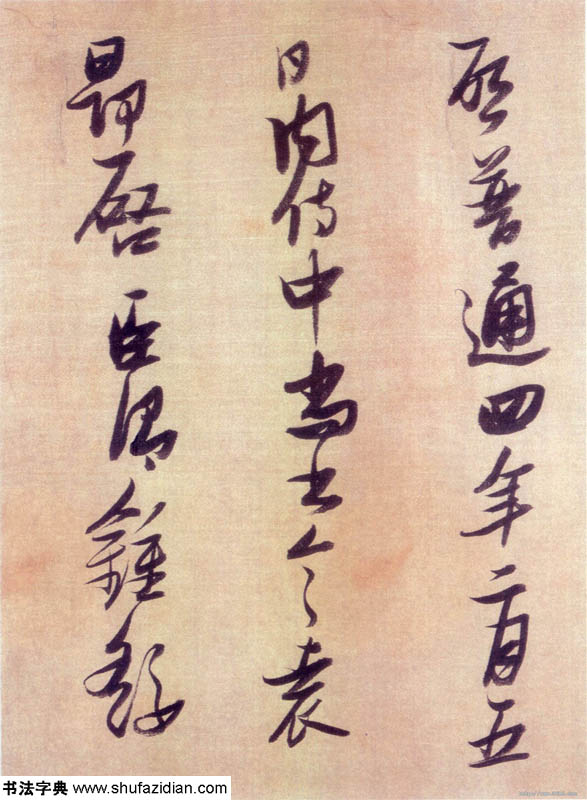
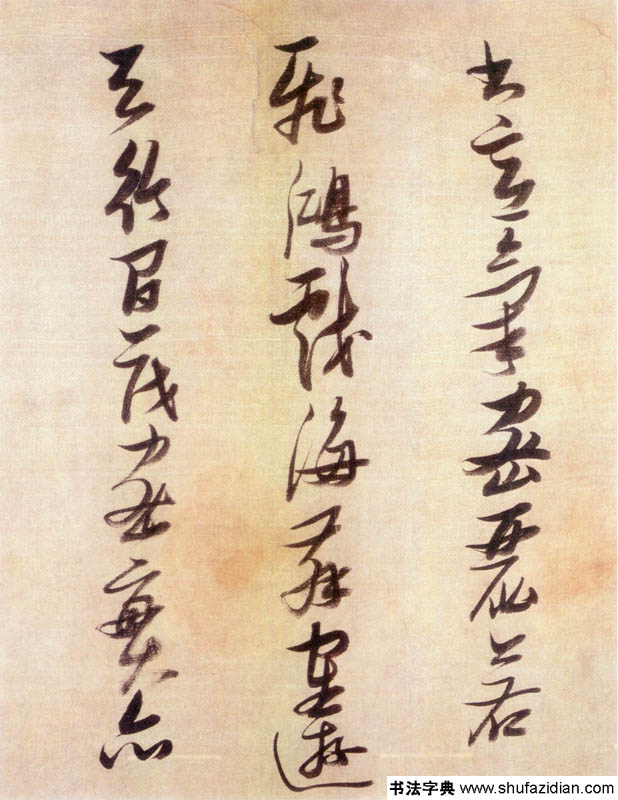
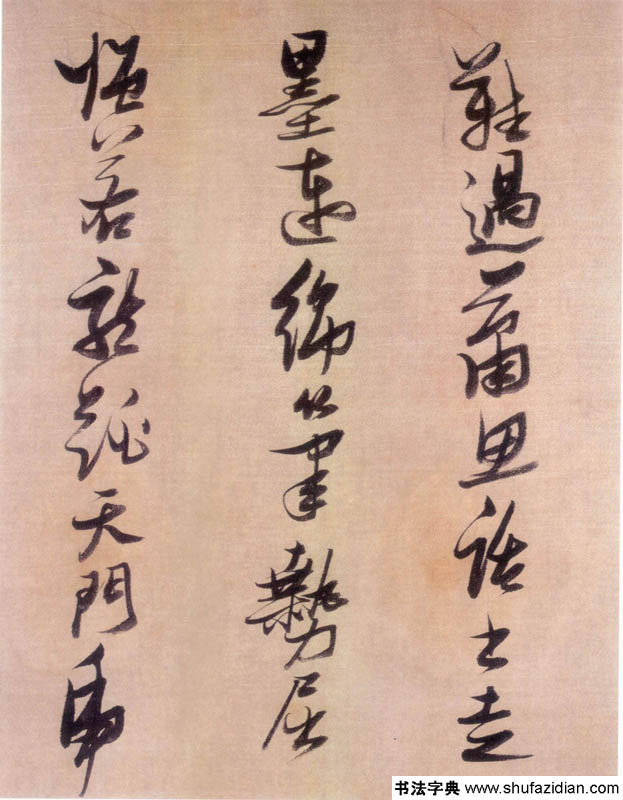
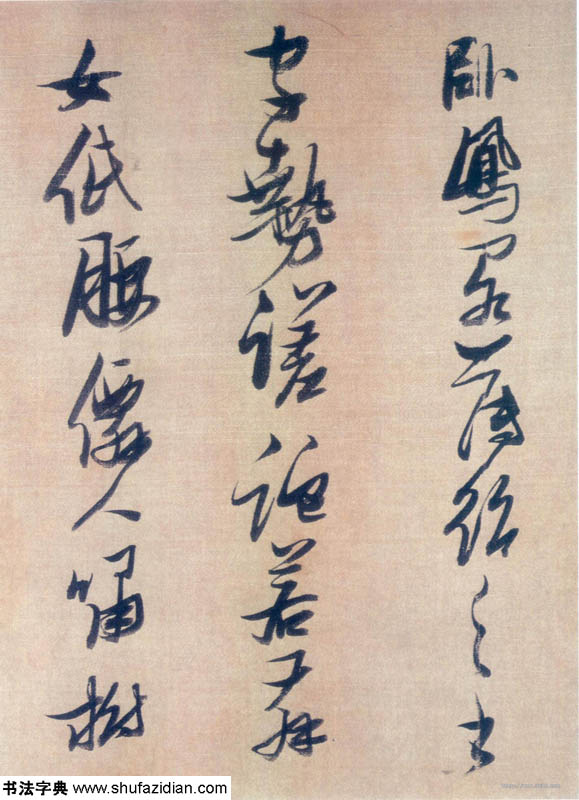
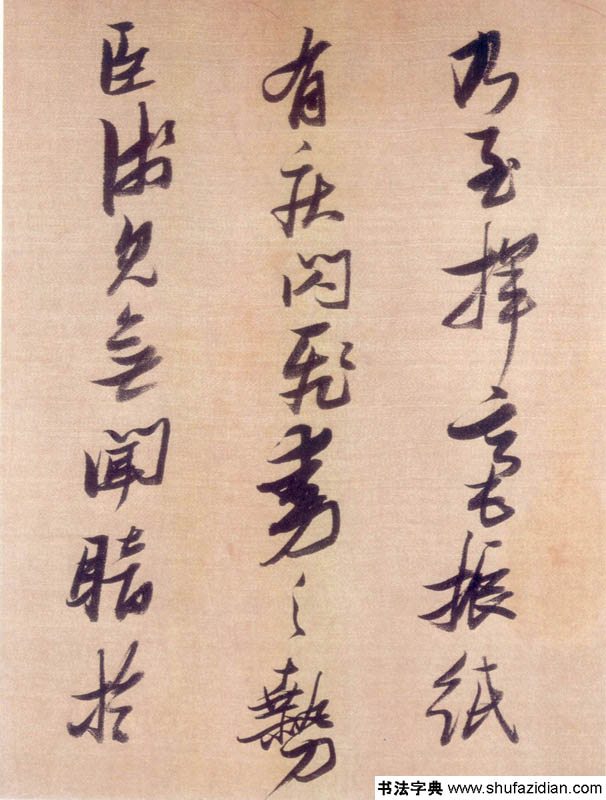
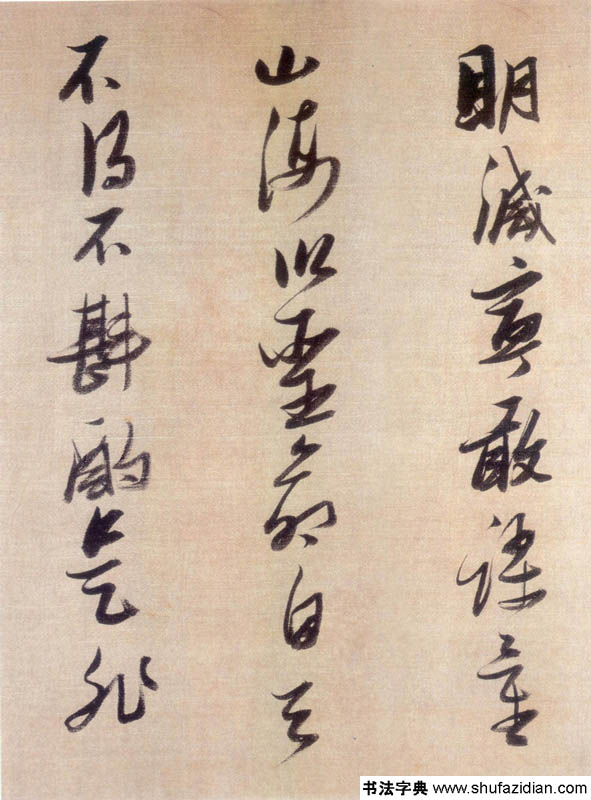
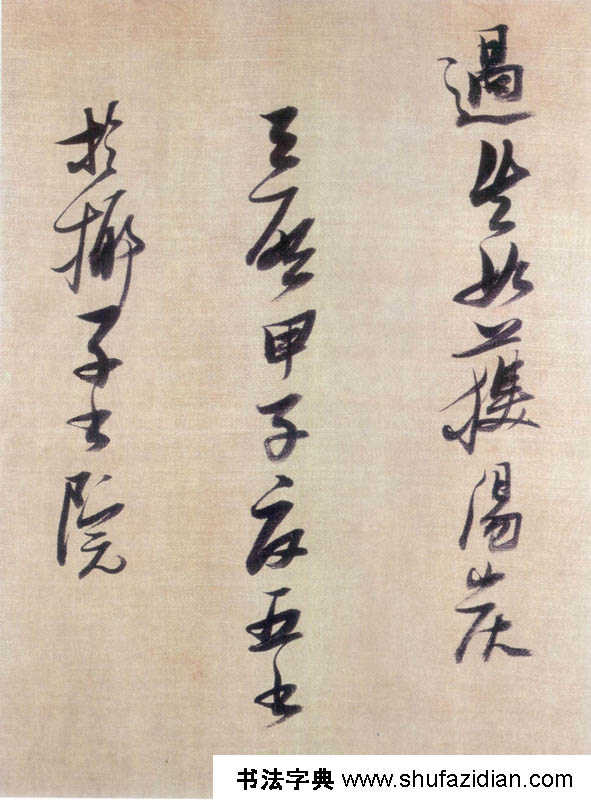
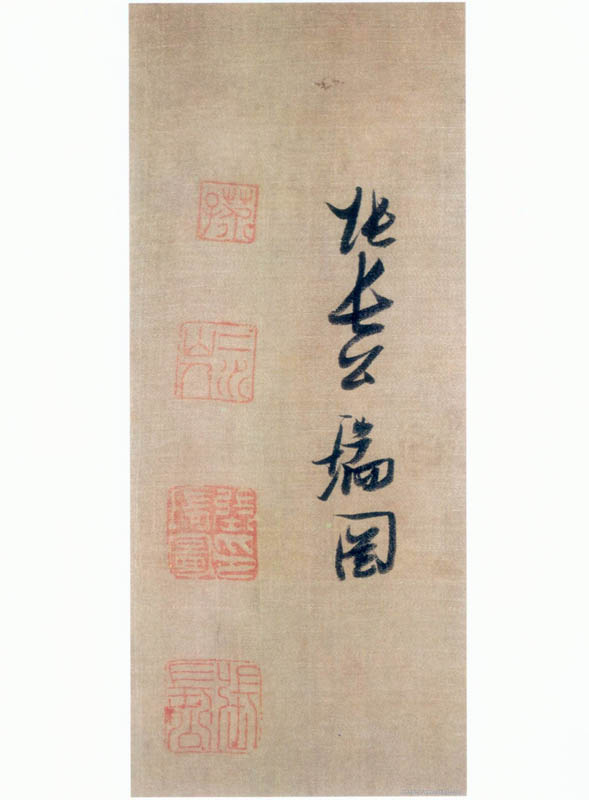
Zhang Ruitu's Running Script Theory Scroll, Silk Edition, 25 cm long and 274 cm wide, collected by Anhui Provincial Museum
Scanned from "Faxes of Ink Writings of Famous Masters of the Past - Ming Dynasty Zhang Ruitu's Running Script Theory Scroll" (Shanghai Painting and Calligraphy Publishing House)
ISBN: 7807251514
Click to download the high-definition picture of the full text of "Zhang Ruitu's Running Script Theory"
Interpretation: Emperor Wu of the Han Dynasty was good at the Tao, and his wish for immortality was based on his imaginary desire. Jing's book was like a drifting wind, and a bird of prey suddenly flew over the Liang swan. The book was like Taizu forgetting to go to bed. The beholder's eyes were mournful. The emperor's elephant book was like the sound of singing surrounding the beam. The person's house, Hui Wei Heng's book, was like a beautiful woman dancing with flowers. The Laughing Mirror Terrace, Meng Guanglu's calligraphy is like a collapsed cliff, people are afraid of it, Li Si's calligraphy is a crown in the world, and it is not easy to install. The twenty-five people on the right have been good at writing since ancient times and today. The ministers are ordered to comment on the ancient and modern scribes. How can the ministers dare to judge the rivers and seas if they are stupid? For five days, Yuan Angqichen, the Minister of Internal Affairs, said that Zhong Yao's calligraphy was as dense and beautiful as a flying hong playing in the sea and dancing as a crane in the sky. It was dense and dense but also sad. If a dancing girl lowers her waist, an immortal screams at a tree, or even shakes a piece of paper, it has the power of flashing and flying. The minister is ignorant and dark, and is blind to the light and destruction. I would rather dare to measure the mountains and seas with the sacred mandate. I have to consider the right and wrong, and the fault is like getting soup and charcoal. The Tianqi Jiazixia Five Books are written in Coconut Academy Zhang Changgong Ruitu
Attached is the original book description:
"Xingshu Lun Shujuan" was written in Jiazi, the fourth year of Qi tomorrow (1624), when Ruitu was fifty-four years old. Basically it has the characteristics of his calligraphy and represents his middle-aged level. Facing this volume, it is difficult for us to find previous works with a similar style, but it can be seen that he has profound research on ancient calligraphy. From it, we seem to be able to catch a glimpse of Sun Guoting's "Book Book", "Jingfu Palace Ode", "Cursive Script Thousand Character Essay" and Su Shi's "The Drunken Old Pavilion", but he has broken free from the constraints of the ancients. , such as the strange changes in its structure. Although the horizontal and flat shape comes from Su's calligraphy, it is turned left and right without seeking balance; the changes make the turns into straight and quick square folds, between stipples, contradictions and yielding, left and right turns, The writing style is strong and the rhythm is lively, with straight turns in the flow and pauses in the flight, emphasizing the passionate movement, giving people a feeling of strange and dangerous writing style and full of vitality.
In the composition, the word spacing is tightened and the spaces between the lines are sparse, so that the entire calligraphy movement shows an orderly control, which not only avoids the phenomenon of being disorganized and dazzling, but also spreads out horizontally on the long scroll. It creates a momentum filled with smoke and clouds that cascades thousands of miles, which brings a great visual impact to the viewer and makes people sigh with relief.
The top of the pen is steep and steep, and the edge of the pen is mostly used on the side. The starting point of the pen is mainly frustration, the beginning and end of the pen are chopping, the turning and setting are quick, the lift and press are firm and powerful, the horizontal support and vertical support are used to jump and turn, exaggerated and changeable - strange and dangerous Unpredictable. The strokes are stretched at a steep angle, and then the ink is applied with a light and exposed edge, and then the brush strokes are carried over heavily, and at the turning point, the brush strokes are suddenly folded, using sharp edges, sharp square folds, and tight and airtight horizontal strokes. The arrangement combines to form a distinct rhythm of folding and swaying. This dynamic of big turns and folds, highlighting the horizontal direction, has changed the cursive writing style of the past dynasties, which used circular turns to gain vertical momentum, and replaced it with square, steep and steep strokes.
The whole volume of works is very harmonious. It is divided horizontally with square and folded strokes, densely covered with continuous momentum, arranged in a wide and relaxed array, flexing and slowing, tough and elegant, cramped and expanded, frustrated and continuous, with numerous words. The unusual yet harmonious brushstrokes form a magnificent picture. This "magnificence" is not only the beauty of achieving harmony in the difficult jumps, but also the beauty of seeking peace in the harsh hunting and killing. It is also a kind of transition from sadness and excitement to peace. The beauty of relaxation. Here, in the main theme of the change and unity of frustration and support, he also pays attention to the change of ink rhyme. The pen and ink are plump and honest, the atmosphere is vivid and smooth, and the strokes are solid and heavy, and there are few light strokes, so it has formed a style that is different from the predecessors and contemporaries. distinctive personal characteristics. This scroll is written in middle-aged cursive script, which is calmer and lighter than the cursive script in later years. Not only are the turning points more gentle and less sharp, but although the structure is strange and the style is fierce, it does not lose its wildness. The characteristics of his writing are inextricably linked with his state of mind at the time: the pain and helplessness in his chest were resolved in the "Zen-flavored" calligraphy. This also proves that he is an enterprising and creative master. His enterprising spirit made him rise from a humble scholar to an important official in the imperial court, and his creativity made him turn from a political loser into an artistic winner. This volume is provided by Anhui Provincial Museum. (Text/Zhang Feiying)

